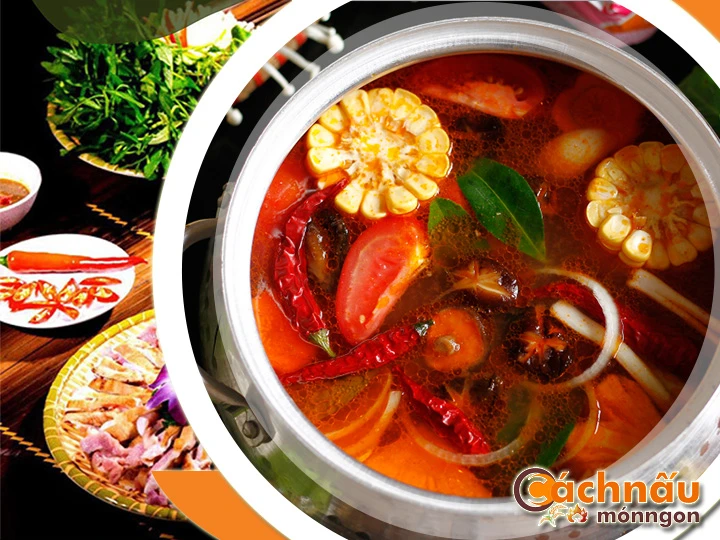This comprehensive guide explores all aspects you need to discover about rabbit hot pot, from its old-world roots to updated recipes, nutritional benefits, and methodical instructions for creating the flawless recipe at home. Whether you are a experienced cook or a cooking enthusiast, this guide will encourage and guide you to excel in the technique of rabbit hot pot.

THE BACKGROUND & CULTURAL ASPECTS REGARDING BRAISED RABBIT DISH.
Rabbit hot pot represents a unique and historical dish with meaningful traditions in many areas. Its demand stems not only from its rich flavor but also from its heritage and meaning.
1. Discovering the Evolution regarding Rabbit stew.
- Early Beginnings: Stewed rabbit started in villages where rabbit meat were a abundant, valuable food source. In early Chinese history, it was a traditional treat, particularly during celebrations.
- Spread Across Regions: In Western countries like the UK, rabbit was commonly found in broths, changing into modern versions of hot pot as the dish found fans worldwide.
2. Rabbit Stew in Eastern Heritage.
- Across China: Known as China’s beloved rabbit hot pot, rabbit hot pot is a staple of Sichuan cuisine, well-known for its fiery flavors and commonly shared during family reunions.
- Within Korea and Japan: While less frequent, rabbit hot pot is sporadically cooked as a healing cuisine in Korea, or drawing influence from nabemono hot pot in Japan, featuring local garden vegetables and herbs.
- Throughout Vietnam: Although rabbit hot pot is not a common daily dish, it is well-known during special occasions or in agricultural communities where rabbit meat is readily available. It is often made using distinctive spices such as aromatic lemongrass, ginger, and chili, paired with fresh vegetables like water spinach, green mustard, or water mimosa. This dish is favored for its special aroma and high nutritional value, frequently served at gatherings with friends or family.
Ở Việt Nam, tuy không được xem là món ăn đại trà ngày qua ngày, nhưng nổi tiếng trong những dịp đáng nhớ hoặc ở những nơi hẻo lánh, nơi nguồn thịt thỏ phong phú. Thường được kết hợp với gia vị đặc trưng như sả, gừng, và vị cay nồng của ớt, kết hợp với rau nhút. Món ăn này được yêu thích nhờ hương vị độc đáo và lợi ích sức khỏe, thường buổi gặp mặt ấm cúng.
3. Rabbit Hot Pot throughout Western Cuisine.
- France: Widely known as a warming meal with red wine, herbs like rosemary, and vegetables like carrots and potatoes. Rabbit hot pot is a traditional recipe for holiday meals.
- In Italy: The dish “Cacciatore”, featuring rabbit prepared with a tomato and wine base, is a early version of hot pot-style rabbit dishes.
RECIPES AND TECHNIQUES FOR COOKING RABBIT HOT POT
Rabbit hot pot is a versatile dish that merges fresh ingredients, flavorful broths, and distinct techniques to create a hearty and satisfying meal. Below are detailed insights into the key recipes and methods to excel in rabbit hot pot.
Essential Recipe for Rabbit Hot Pot
* Required Ingredients:
- 1 whole rabbit (sectioned)
- 4 cups of broth (bone broth)
- Vegetables (mushrooms)
- Spices and herbs (ginger)
- Seasonings (pepper)
- Optional: rice for serving
* Cooking Instructions:
- Prepare Your Meat: Wash and cut the rabbit into pieces. Marinate with a pinch of salt, black pepper, and a drizzle of soy sauce for half an hour to enrich the flavor.
- Make the Broth: Heat a vessel with a touch of oil. Sauté minced garlic and sliced ginger until aromatic. Add your preferred broth and bring it to a simmer.
- Simmer the Rabbit: Add the rabbit pieces into the pot and let them cook slowly on a low flame for around half an hour until cooked through.
- Incorporate Vegetables: Add your preferred vegetables and cook until they are softened but still fresh-looking.
- Plate Up: Transfer the hot pot to a serving dish. Serve with side dishes and extras like rice or noodles.
Mastering Rabbit Hot Pot Techniques
- Seasoning:
. Marinate the rabbit with a mixture of salt, pepper, and seasonings to amplify its base flavor.
. For more richness, use wine, soy sauce, or a mix of herbs like rosemary and thyme.
- Building Layers of Flavor:
. Start by simmering the lẩu thỏ đúng điệu rabbit in the broth to draw out its savory taste.
. Gradually add vegetables based on their texture needs.
- Optimal Cooking Duration:
. Avoid overcooking the rabbit, as it can turn chewy.
. Test for readiness by checking if the meat is fork-tender.
- Taste Customization:
. Fine-tune the broth by adding extra herbs as needed.
. Experiment with different flavor profiles, such as spicy Sichuan-style variations.
Pro Tips for Rabbit Hot Pot
- Fresh Ingredients: Always choose locally sourced rabbit and in-season greens for the highest quality.
- Taste and Adjust: Be attentive of the saltiness in the broth. Sample and adjust frequently during cooking.
- Dipping Sauces: Offer a selection of sauces like garlic-chili oil or savory soy mixes to elevate the dining experience.
- Visual Appeal: Use a communal pot or serve the hot pot as a focal point to foster interaction.
By perfecting these cooking techniques, you can make a rabbit hot pot that’s tasty and beautifully presented, ensuring it becomes a star attraction for any occasion or event.